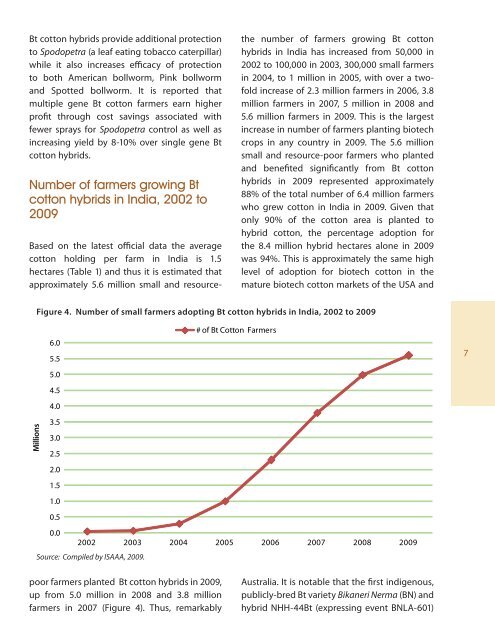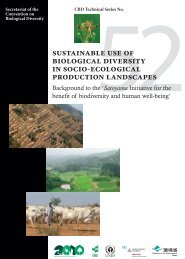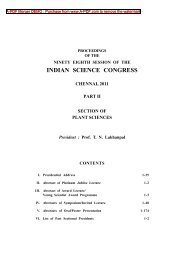A COUNTRY PROFILE Bt CoËon In India - India Environment Portal
A COUNTRY PROFILE Bt CoËon In India - India Environment Portal
A COUNTRY PROFILE Bt CoËon In India - India Environment Portal
Create successful ePaper yourself
Turn your PDF publications into a flip-book with our unique Google optimized e-Paper software.
<strong>Bt</strong> cotton hybrids provide additional protection<br />
to Spodopetra (a leaf eating tobacco caterpillar)<br />
while it also increases efficacy of protection<br />
to both American bollworm, Pink bollworm<br />
and Spotted bollworm. It is reported that<br />
multiple gene <strong>Bt</strong> cotton farmers earn higher<br />
profit through cost savings associated with<br />
fewer sprays for Spodopetra control as well as<br />
increasing yield by 8-10% over single gene <strong>Bt</strong><br />
cotton hybrids.<br />
Number of farmers growing <strong>Bt</strong><br />
cotton hybrids in <strong>In</strong>dia, 2002 to<br />
2009<br />
the number of farmers growing <strong>Bt</strong> cotton<br />
hybrids in <strong>In</strong>dia has increased from 50,000 in<br />
2002 to 100,000 in 2003, 300,000 small farmers<br />
in 2004, to 1 million in 2005, with over a twofold<br />
increase of 2.3 million farmers in 2006, 3.8<br />
million farmers in 2007, 5 million in 2008 and<br />
5.6 million farmers in 2009. This is the largest<br />
increase in number of farmers planting biotech<br />
crops in any country in 2009. The 5.6 million<br />
small and resource-poor farmers who planted<br />
and benefited significantly from <strong>Bt</strong> cotton<br />
hybrids in 2009 represented approximately<br />
88% of the total number of 6.4 million farmers<br />
who grew cotton in <strong>In</strong>dia in 2009. Given that<br />
only 90% of the cotton area is planted to<br />
hybrid cotton, the percentage adoption for<br />
the 8.4 million hybrid hectares alone in 2009<br />
was 94%. This is approximately the same high<br />
level of adoption for biotech cotton in the<br />
mature biotech cotton markets of the USA and<br />
Figure 4. Number of small farmers adopting <strong>Bt</strong> cotton hybrids in <strong>In</strong>dia, 2002 to 2009<br />
Millions<br />
# of <strong>Bt</strong> Cotton Farmers<br />
6.0<br />
5.5<br />
5.0<br />
4.5<br />
4.0<br />
3.5<br />
3.0<br />
2.5<br />
2.0<br />
1.5<br />
1.0<br />
0.5<br />
0.0<br />
2002 2003 2004 2005 2006 2007 2008 2009<br />
Source: Compiled by ISAAA, 2009.<br />
7<br />
Based on the latest official data the average<br />
cotton holding per farm in <strong>In</strong>dia is 1.5<br />
hectares (Table 1) and thus it is estimated that<br />
approximately 5.6 million small and resourcepoor<br />
farmers planted <strong>Bt</strong> cotton hybrids in 2009,<br />
up from 5.0 million in 2008 and 3.8 million<br />
farmers in 2007 (Figure 4). Thus, remarkably<br />
Australia. It is notable that the first indigenous,<br />
publicly-bred <strong>Bt</strong> variety Bikaneri Nerma (BN) and<br />
hybrid NHH-44<strong>Bt</strong> (expressing event BNLA-601)

















